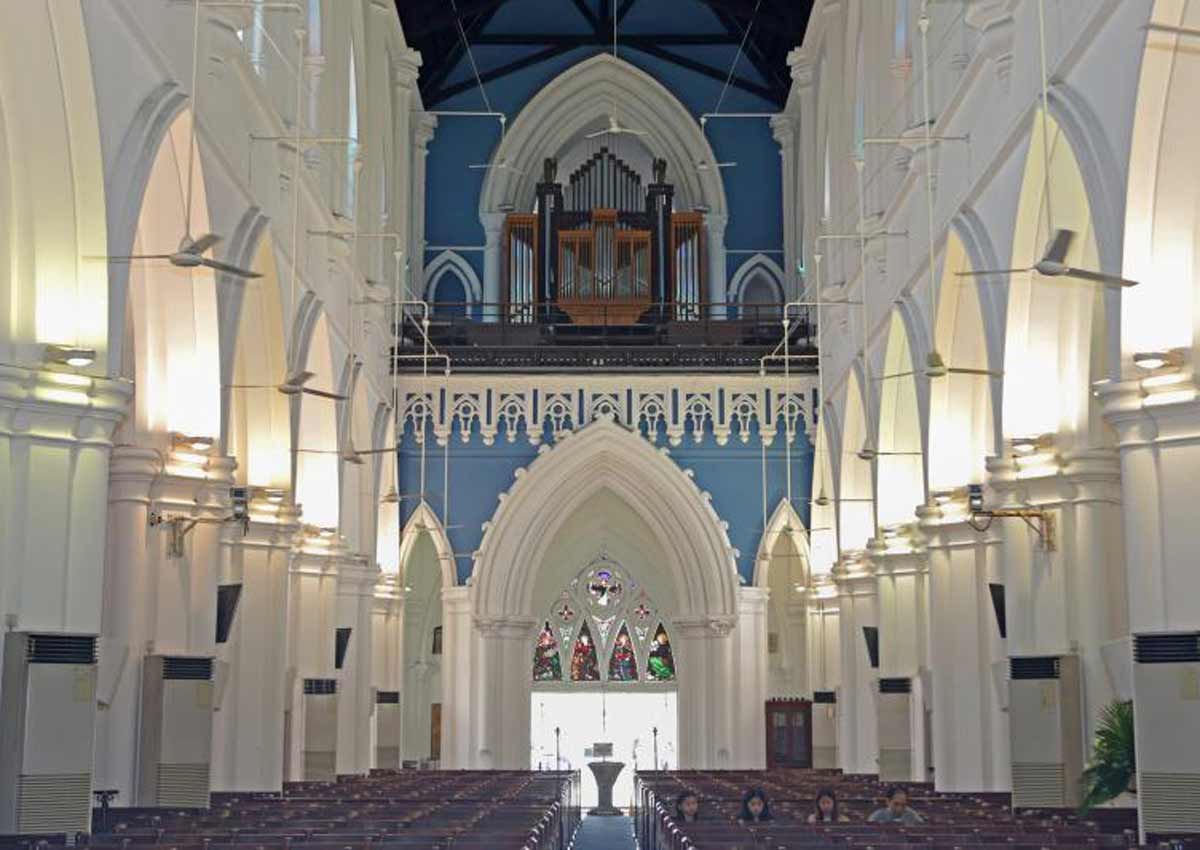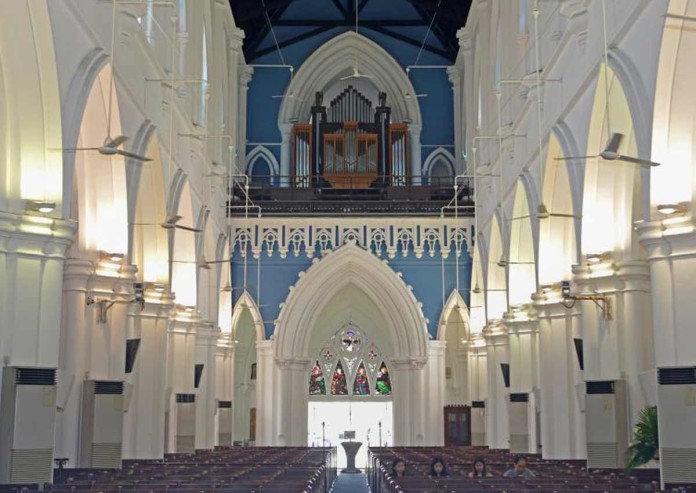The 1860s St Andrew’s Cathedral has been likened to a great-grandmother.
As she ages in tropical Singapore, her list of ailments accumulates.
For instance, the plaster finish encasing the neo-Gothic structure is flaking in a few areas, and its plumbing system was so old it had to be recently upgraded to suit modern-day needs.
The job of making sure that the seat of the Anglican bishop of Singapore ages gracefully is one that Mr Kenneth Ng works at with the utmost devotion. The cathedral’s general manager sees himself as the monument’s custodian.
“It’s like piecing together a puzzle, to put all its pieces right, to keep it functioning and majestic for future generations,” said Mr Ng, 49, who was roped in 12 years ago to oversee the church’s expansion and restoration efforts, which included maintaining its stained glass panels.
Assistant professor of architecture and sustainable design at the Singapore University of Technology and Design, Dr Yeo Kang Shua, has been enlisted to carry out research on the plaster.
Records by the cathedral’s architect John F. A. McNair indicate that Madras chunam had been used. This supposedly comprised shell lime, egg whites, and coarse sugar which were mixed with “water in which the husks of coconuts had been steeped”.
But the historical plaster sampled on site so far contains high levels of sand, which contradicts McNair’s account, said Dr Yeo.
“It appears that different plaster finishes were used to repair the cathedral over time,” he said, noting that McNair’s account came 35 years after the cathedral was completed.
He added: “Now we’re trying to understand the historical materials used, including those from the recent past in order to aid any future conservation works that the cathedral embarks on.
“The iconic Anglican institution, in the heart of the civic district, sits on land that was set aside for a church in 1822 by Sir Stamford Raffles. The first building was completed in 1837 but its tower was struck twice by lightning in the 1840s.
Services ceased in 1852. A second building was completed in 1861 – in an effort that was budgeted at 47,000 Indian rupees.
It was paid for by the East India Company, and built by Indian convict labourers. Granite quarried from Pulau Ubin was used to build the structure.
The building, with its early English Gothic architecture, features simple lines. Sitting on an eight-acre (3.23ha) compound, it is encircled by an expansive lawn.
Consecrated in 1862, it is a living museum in other ways.
For instance, stained glass windows featuring the crests of Sir Stamford Raffles and Singapore governors John Crawfurd and William Butterworth were installed in the nave.
“There’s plenty to see at every corner,” said Mr Ng, who gave as examples the memorial tablets dedicated to historical events, such as one for sailors of the warships HMS Prince of Wales and HMS Repulse, which were sunk by Japanese planes in 1941.
It bore witness to the war in other ways, serving as a hospital while Singapore was shelled heavily.
An account by Anglican priest John Hayter describes the scene on Feb 14, 1942, the day before Singapore fell to the Japanese, as “an unforgettable picture”.
He wrote that the wounded lay in the building’s nave and aisles, which had been emptied of their furnishings.
Doctors and orderlies moved about doing their work and, despite the “noise and fury” and crashing of bombs outside, the building was filled with a sense of peace.
The next day, British Lieutenant-General Arthur Percival visited the church and took communion.
Later, he surrendered Singapore to the Japanese at the Ford Factory in Bukit Timah.
During the war, services continued at the church. This was permitted under Japanese Lieutenant Andrew Ogawa, who was a Christian.
The congregation continues to grow today. Sunday services cater to about 4,000 believers.
In fact, to meet growing demand, the cathedral has started conducting Saturday services, which are attended by several hundred worshippers.
These are held in its extension – a sanctuary underground that was completed in late 2005.
The Cathedral functions as the “mother church” to the 28 Anglican parishes around the island.
“It’s a space that we are ‘upkeeping’ and maintaining for generations to come,” said Mr Ng.

This article was first published on November 17, 2016.
Get a copy of The Straits Times or go to straitstimes.com for more stories.


 Photo Gallery
Photo Gallery




